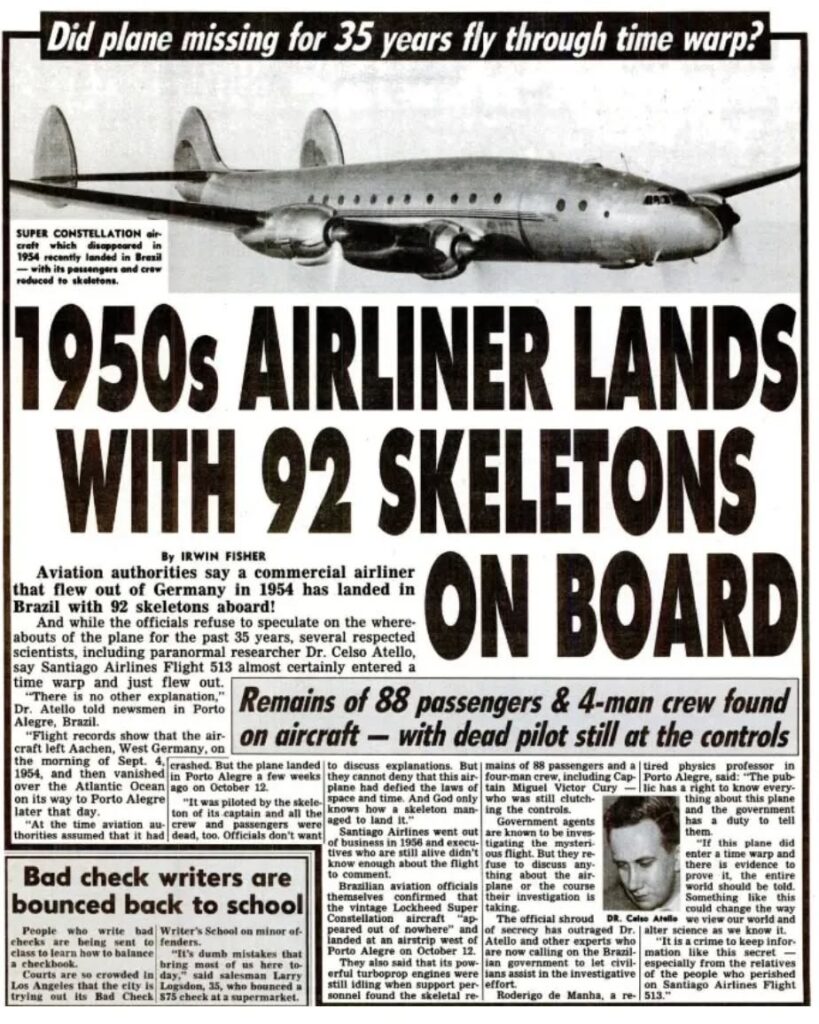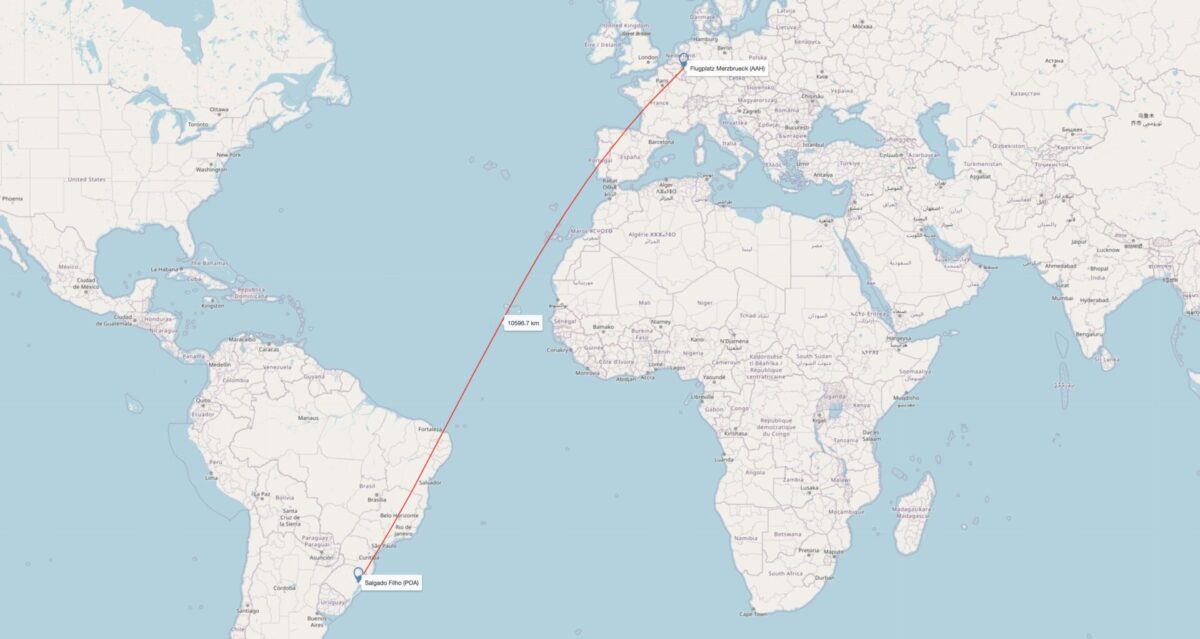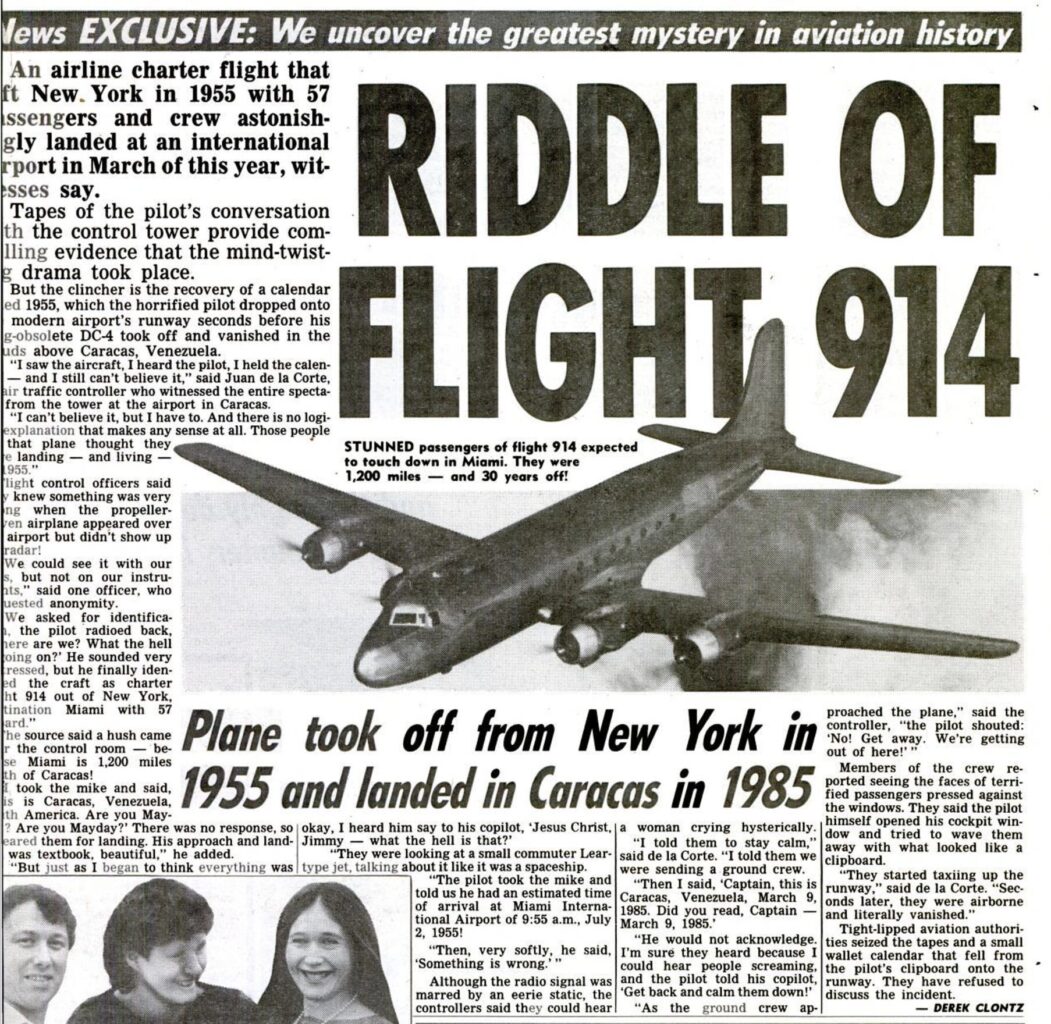In 1989, when people opened their newspapers to read that a missing 1950s airliner had turned up 35 years later, complete with 92 skeletons on board, there was an understandable level of skepticism. But ‘fake news’ wasn’t a familiar issue then, and plenty believed the report.
The article, written by Irwin Fisher in the Weekly World News, alleged that a Lockheed L-1409 Super Constellation, missing since 1954, had reappeared on October 12th, 1989, and landed in Brazil. Unbelievably, the article claimed that the skeletons of all 88 passengers and four crewmembers were still on board.

Fisher even quoted a ‘paranormal researcher’, Dr Celso Atello, who speculated that the aircraft had perhaps passed through a time warp. He went on to say that the airplane had “defied the laws of space and time,” concluding: “God only knows how a skeleton managed to land it.”
As much as the world loves a good mystery, this story was, of course, a work of fiction. As fact-checking site Snopes points out, “The discovery of wormholes probably won’t be made by tabloid journalists.”
Nevertheless, the story continues to capture the imagination, reappearing occasionally on social media. Even today, some maintain the incident did indeed happen and is simply being covered up. Once we scratch the surface, though, the level of fabrication becomes blatantly clear.

| Lockheed L-1409 Super Constellation | |
| Crew | 3 – 4 |
| Passengers | 62 – 95 (max 106) |
| Engines | 4 x Wright R-3350 972TC-18DA-3 Turbo Compound |
| Speed | 300 mph (483 km/h, 261 kts) |
| Range | 5,150 miles (8,290 km, 4,480 nmi) |
The story of Santiago Flight 513
The Weekly World News report states that the Lockheed Super Constellation left Aachen, Germany, on September 4, 1954, bound for Porto Alegre, Brazil. Operated by Santiago Airlines, it had 88 passengers and four crew members on board.

En route, while the aircraft was over the Atlantic Ocean, all contact was lost and the flight never landed at its destination. At the time, authorities assumed it must have crashed into the sea, although no wreckage was ever discovered.
Thirty-five years later, on October 12, 1989, the plane supposedly reappeared, circling overhead at Porto Alegre Airport. According to the story, it landed perfectly, surprising air traffic controllers, not least because the Constellation hadn’t flown a commercial service in the US since 1967 and was on the verge of being banned in the country due to FAA safety concerns.
The story claims that, on arriving at the aircraft, investigators found all four turboprop engines still humming away. Even more bizarrely, it says the cabin was filled with the skeletons of the 88 passengers strapped into their seats, alongside four crew members, including the captain, who was ‘still clutching the controls.’
Why Santiago Flight 513 has to be a hoax
Even putting aside the outlandish time travel/wormhole theory, this story has some major plot holes:
- The airport was not suitable for the Super Constellation to take off from
- The aircraft in question didn’t have the range for the route
- There are no official reports of equivalent missing airliners from 1954
- There are no official reports of lost airliners ‘appearing’ in 1989
The only commercial airport that could be described as ‘Aachen’ is Maastricht Aachen Airport (MST), not only in a different city but also in another country, being over the border in the Netherlands.
Aachen does have an airfield – at the time of 1954, though, it was merely a grass strip. The Lockheed Constellation could take off from grass, and did so once or twice, but only under specific circumstances such as a lighter load and longer runway. The Super, stretched by eight feet, would have struggled to leave with 92 souls on board.

The route from Aachen Airfield to Porto Allegre is just short of 6,600 miles. Ultimate Specs defines the typical range of a Super Constellation at 5,150 miles, so it couldn’t have made the trip without a stop (paranormal or otherwise).
Airliners do indeed go missing from time to time, from Amelia Earhart vanishing in her Lockheed Electra in 1937 to the infamous Malaysia Airlines Flight MH370. Certainly, back in the 1950s, it wasn’t unheard of for aircraft to vanish on long transoceanic trips, lost to the vast seas. But did Santiago Airlines Flight 513 disappear at all? Indeed, did it even exist?
In fact, there is no record of a company by the name of Santiago Airlines ever existing, and there are no news reports of its disappearance. No other outlets covered the mysterious reappearance, and there were no official investigations. The whole story, from start to finish, is revealed as a work of fiction.
Weekly World News: A track record of hoaxes
The Santiago Airlines story was not the first time Weekly World News had made something up. Four years previously, a journalist called Derek Clontz wrote a strangely similar story about a missing flight, though this time he didn’t fabricate the airline’s name.

Pan Am Flight 914 was (allegedly) a Douglas DC-4 that took off from New York en route to Miami in 1955. It never made it and was lost until it materialized over the skies of Caracas, Venezuela, thirty years later. Having made a textbook landing, the pilot panicked and took off again, conveniently making it impossible to interview any occupants. The story, of course, was completely false.
The list of fabricated stories to have graced the pages of Weekly World News is not a short one. Dubbed the ‘most creative newspaper in American history’ by the Washington Post, some of its more infamous headlines included:
- 12 US SENATORS ARE SPACE ALIENS
- DEAD ROCK STARS RETURN ON GHOST PLANE
- BAT CHILD FOUND IN CAVE
Weekly World News never denied fabricating many of its stories, but it did so in a way that made them sound almost plausible. It’s a testament to the strange publication that, to this day, many of its stories continue to resurface and get people asking, “Did this really happen?”
In the case of Santiago Airlines Flight 513, however, the answer is a clear, definite ‘no’.

